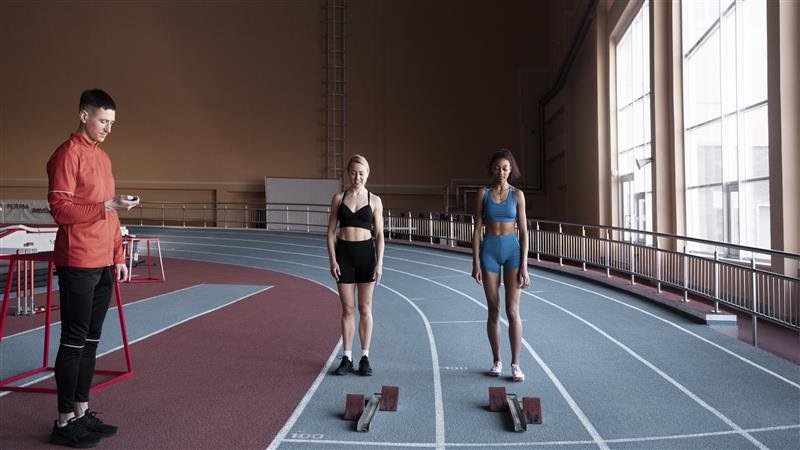When it comes to indoor sports flooring, appearance alone doesn’t determine quality. One of the most critical aspects of performance, safety, and longevity is the floor’s surface evenness and the integrity of seams between tiles or rolls. Even minor irregularities or poorly secured seams can affect athlete safety, ball behavior, and long-term durability.
The core concern for facility owners, managers, and coaches is:
“Will the playing surface be perfectly even without tripping hazards? How noticeable and secure are the seams between tiles or rolls?”
In this blog, we will explore why surface evenness and seam integrity matter, the risks of poor installation, the materials and techniques that ensure uniformity, and best practices for long-term performance and safety.
Understanding Surface Evenness
What Is Surface Evenness?
Surface evenness refers to the flatness and uniformity of the sports floor across its entire area. A perfectly even floor ensures:
- Predictable ball bounce – essential for sports like basketball, volleyball, and table tennis.
- Safe footwork – reducing the risk of trips, falls, or ankle injuries.
- Consistent traction – enabling athletes to cut, pivot, and sprint effectively.
Uneven surfaces can result in:
- Ball trajectory inconsistencies, affecting gameplay.
- Tripping hazards or sudden shifts in footing.
- Increased stress on joints when landing on slightly elevated or depressed areas.
Tolerances and Standards
International sports standards provide guidelines for acceptable surface deviations:
| Sport | Maximum Surface Deviation | Standard Authority |
|---|---|---|
| Basketball | ±3 mm over 2 m | FIBA |
| Volleyball | ±2–3 mm over 2 m | FIVB |
| Badminton | ±2 mm over 2 m | BWF |
| Multi-purpose | ±3 mm over 2 m | EN / ASTM |
Maintaining these tolerances is crucial for athlete safety, fair play, and equipment longevity.
Understanding Seam Integrity
What Are Seams?
Seams are the joints where floor tiles, rolls, or planks meet. They are a necessary component of modular or rolled sports flooring systems. Seam integrity refers to how well these joints stay secure and flush with the rest of the floor.
A well-installed seam ensures:
- Smooth surface continuity – players don’t feel or stumble on the joints.
- Structural stability – prevents panels from lifting, curling, or separating under use.
- Durability – reduces the risk of damage or wear along seam edges.
Poor seam integrity can lead to:
- Raised edges that are tripping hazards.
- Moisture infiltration under the surface, causing warping or adhesive failure.
- Premature wear at joints, affecting aesthetics and performance.
Why Surface Evenness and Seam Integrity Matter
1. Athlete Safety
- Uneven surfaces or weak seams increase the risk of falls, sprains, and joint injuries.
- High-impact sports like basketball or volleyball demand predictable surfaces to avoid missteps during jumps, sprints, and lateral movements.
2. Performance Consistency
- Ball bounce and rebound depend heavily on flat, continuous surfaces.
- Seam irregularities can cause the ball to deviate unexpectedly, impacting gameplay and fairness.
3. Longevity of the Floor
- Even surfaces distribute loads evenly, preventing localized stress and premature wear.
- Secure seams reduce movement and rubbing between tiles or rolls, extending the life of the flooring.
4. Facility Reputation
- Professional-quality floors enhance the facility’s reputation among athletes, coaches, and event organizers.
- Seamless, even floors demonstrate attention to detail and commitment to safety.
Factors Affecting Surface Evenness
1. Subfloor Quality
-
- The subfloor must be level, stable, and free from cracks or defects.
- Even a high-quality sports floor will develop unevenness if the subfloor is poorly prepared.
- Floating subfloors must maintain uniform compression under load to avoid dips or humps.
- The subfloor must be level, stable, and free from cracks or defects.
2. Installation Method
- Incorrect adhesive application or uneven pressure during tile or roll installation can create high or low points.
- Expansion gaps must be properly managed in hardwood or modular systems to prevent buckling or warping.
3. Environmental Factors
- Changes in temperature and humidity can cause some materials to expand or contract.
- Vinyl and rubber floors may slightly deform if climate conditions fluctuate dramatically without proper acclimation before installation.
4. Wear and Tear
- High-traffic areas may experience minor depressions over time.
- Repetitive use by heavy equipment or sports shoes can accentuate even small initial unevenness.
Factors Affecting Seam Integrity
1. Material Type
- Vinyl and rubber rolls rely on adhesive or heat welding to maintain seam integrity.
- Modular tiles depend on interlocking edges or adhesives.
- Hardwood planks require precise nailing or stapling and proper expansion gaps.
2. Installation Quality
- Seams must be aligned accurately and pressed firmly to ensure smooth transitions.
- Inconsistent adhesive application can lead to lifting or separation.
3. Maintenance Practices
- Harsh cleaning chemicals or equipment can weaken adhesives at seams over time.
- Moisture penetration at joints can cause warping or swelling, especially in wood or vinyl floors.
Achieving Surface Evenness
1. Subfloor Preparation
- Conduct levelness checks using laser levels or straightedges.
- Repair cracks, fill depressions, and remove high spots.
- Ensure subfloor moisture content meets manufacturer specifications.
2. Proper Installation Techniques
- Use specialized flooring tools to maintain pressure and alignment.
- For tiles or modular panels, follow interlocking guidelines carefully.
- Ensure consistent adhesive application for roll or sheet materials.
3. Professional Installation
- Even minor deviations can compromise floor performance.
- Professionals ensure precise leveling, seam alignment, and secure adhesion, particularly for large-scale sports facilities.
Ensuring Seam Integrity
1. Seam Sealing
- Vinyl and rubber floors often require heat welding or specialized sealing to prevent separation.
- Sealing protects against moisture infiltration and maintains smooth transitions.
2. Expansion Management
- Floors like hardwood expand and contract with temperature and humidity changes.
- Proper gaps and expansion allowances prevent buckling or seam separation.
3. Regular Inspection
- Periodically check seams for lifting, curling, or gaps.
- Early detection prevents accidents and reduces costly repairs.
Maintenance and Monitoring
1. Cleaning
- Use appropriate cleaning solutions to avoid adhesive degradation or material swelling.
- Avoid excessive water on seams for materials like vinyl or hardwood.
2. Minor Repairs
- Small seam issues can be corrected with adhesive touch-ups or filler compounds.
- Address uneven areas early to prevent worsening over time.
3. Environmental Control
- Maintain consistent indoor temperature and humidity.
- Sudden environmental changes can affect both surface evenness and seam integrity.
Real-World Applications
1. Professional Basketball Courts
- Even surfaces and secure seams are critical for ball control and athlete safety.
- Players can perform rapid cuts and jumps without fear of tripping or irregular bounce.
2. Badminton Courts
- Quick lateral movements require seamless flooring to avoid foot snagging.
- Vertical energy transfer is consistent only when the floor is flat and seams are secure.
3. Volleyball Courts
- Spiking and diving demand a predictable surface.
- Properly installed seams prevent surface misalignment during high-impact landings.
4. Multi-Purpose Halls
- These facilities host varied sports and events, making surface evenness and seam integrity crucial for all activities.
- Modular floors allow easy replacement of damaged sections while maintaining overall uniformity.
Choosing the Right Flooring System
When evaluating sports flooring for surface evenness and seam integrity, consider:
- Material Selection – Vinyl, polyurethane, rubber, or hardwood, depending on performance needs.
- Professional Installation – Reduces the risk of uneven surfaces and insecure seams.
- Subfloor Compatibility – Ensure the subfloor is level, stable, and dry.
- Maintenance Requirements – Floors that are easy to inspect, clean, and repair maintain seam integrity over time.
- Testing and Certification – Look for floors tested to FIBA, BWF, EN, or ASTM standards for flatness and seam security.
Conclusion
Surface evenness and seam integrity are fundamental to a sports floor’s safety, performance, and longevity. Key takeaways include:
- An even surface ensures consistent ball bounce, predictable footing, and athlete safety.
- Secure seams prevent tripping hazards, moisture damage, and premature wear.
- Proper subfloor preparation, professional installation, and ongoing maintenance are essential.
- Selecting high-quality materials and adhering to international standards guarantees long-term performance and reliability.
For facility managers, coaches, and event organizers, the investment in even surfaces and secure seams is not just about aesthetics—it’s about protecting athletes, enhancing gameplay, and safeguarding the facility’s reputation.
When combined with other factors like shock absorption, slip resistance, and sports-specific performance metrics, a flat, seamless floor provides a world-class playing experience that keeps athletes performing at their best while minimizing injury risks.



